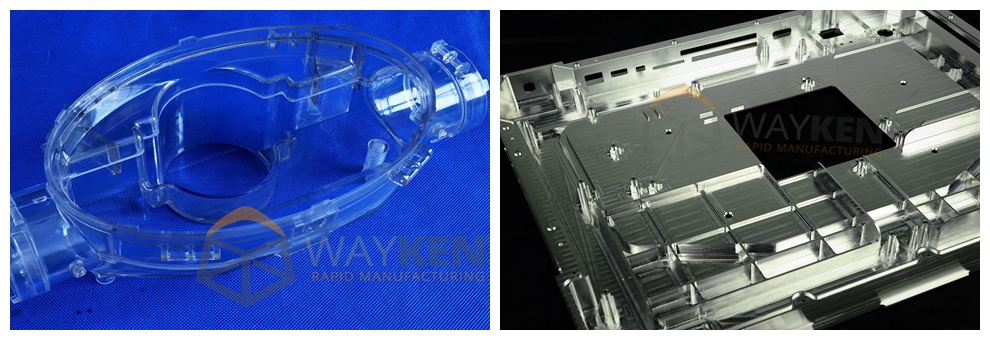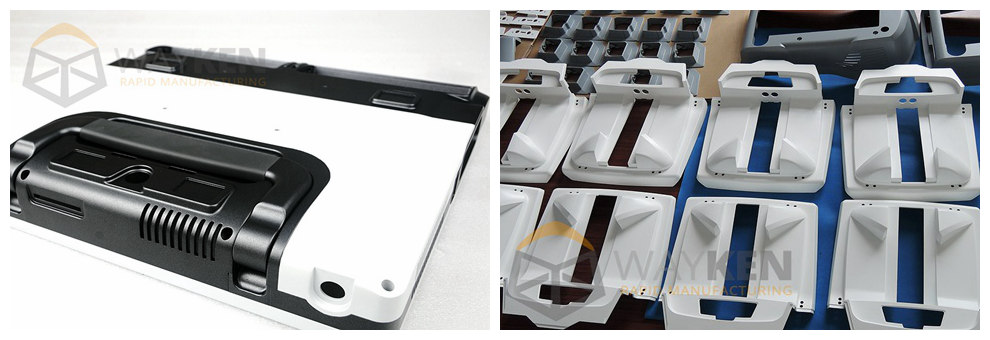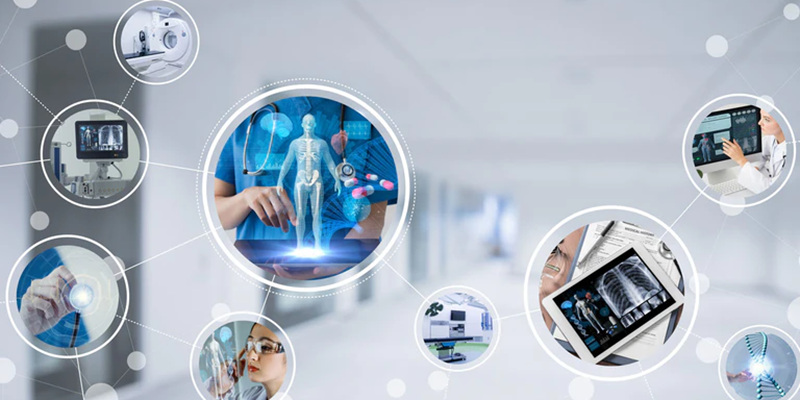Posted on Sept 1th, 2020 | By WayKen Rapid Manufacturing
In the treatment of the Covid-19 pandemic, the ventilator and ECMO (artificial lung) play a very critical role. Nowadays, the market has a huge demand for various modern medical devices, which has promoted the development of the medical device manufacturing industry and also promoted the development of the medical device parts processing industry. Medical device prototyping is the foundation of your medical product design and development process.
WayKen has been providing a complete set of rapid prototyping and manufacturing solutions for the medical industry. From handheld devices to large-scale treatment devices, we offer complete medical device prototype services.
What Are Applications of CNC Machining Medical Parts?
With remarkable technology and developed equipment, WayKen has become a leader in the CNC machining of medical parts. Here are applications involved of CNC machining medical parts: Handheld, Surgical Instruments, Medical Carts, Electronic Apparatus, Medical Diagnostic Equipment, Ultrasonic Equipment, Medical Monitor Instruments, Laser Equipment, Medical Treatment Devices, Physiotherapy Apparatus, Anatomical Models, MRI Devices, Tablets & Panels, X-ray Equipment, Teaching Aids, Clinical Analytical Instruments, Care Equipment and so on.
The Reasons for Custom Machining Medical Parts?
1. The required parts are not standard and cannot be directly obtained from the supplier.
For many reasons, parts may not exist elsewhere. In many cases, when engineers create a novel production project, custom processing is required, and the individual components of the project cannot be purchased from the supplier, or not at a reasonable price. These parts may be simple, such as gears or buttons of non-standard sizes or materials. They may be entirely new inventions.
2. The required parts have unique functions that are not found on the standard part.
For completely common parts that happen to have special requirements, custom machining may be necessary, such as custom adapters, additional features, or text engraving.
3. Multiple elements can be combined into one part.
In many cases, custom machining is used to manufacture parts or large parts with multiple features. Because these parts are customized and ordered for specific projects, they may be heavily biased toward a specific end-use. Standardized or common components are not useful.
4. High-quality parts can be manufactured promptly in an emergency, and small quantities are acceptable in machine shops.
Whether it is metal processing (aluminum, brass, stainless steel, and so on.) or plastic processing, it has all the conventional advantages and functions of on-demand CNC. Even in emergency situations, due to the short set-up time and few minimum order quantities, high-quality parts can be quickly produced from its digital files.
How to Realize Custom Machining in the Medical Industry?

1. Material Selection
There are lots of CNC machining materials. Which material should be selected for medical and dental equipment? When selecting the best materials for CNC medical components, the load, stress, impact, and temperature that the product needs to withstand, as well as the size, weight, and other factors of the components should be considered. For example, the materials used to manufacture implants should meet strict biocompatibility and sterilization requirements.
Different medical devices have their own best suitable materials. For example, for implants, the best materials would be Titanium alloys, Cobalt-chrome alloys, Stainless steel, PEEK, etc. Ti Alloy(Ti6Al4V), SUS Alloy (SUS630, SUS420J2, SUS440C), Al Alloy (A 2000 series, A 6000 series), and Resin are appropriate materials for surgical instruments. For more detailed selected materials, just upload your design files and contact us for professional advice.
2. CNC Machining Process Selection
In short, custom machining is all forms of CNC machining-CNC milling, CNC turning, EDM, etc., whose explicit purpose is to create parts that don’t exist elsewhere.
Milling is a machining process that uses rotating multi-point cutting tools to remove material from the part. In CNC milling, the CNC machine tool usually feeds the part in the same direction as the cutting tool rotation, while in manual milling, the machine tool feeds the part in the opposite direction as the cutting tool rotates. The operational capabilities of the milling process include end milling (cutting into the workpiece with a shallow, flat surface and a flat bottom cavity) and peripheral milling (cutting into the workpiece with a deep cavity, such as grooves and threads).
Turning is a machining process in which a single-point cutting tool is used to remove material from a rotating workpiece. In CNC turning, a CNC machine tool (usually a lathe or a turning machine) feeds the cutting tool in a linear motion along the surface of the rotating part, removing the material from the circumference until the required diameter is reached to create the internal functions of the parts with external and internal cylinders, for example, slots, taper, and threads. The operating capabilities of the turning process include boring, end face, slotting, and thread cutting.
3. Post Finish Selection
Most of the medical device enclosures are appearance parts, they are usually required painting, sand-blasting, silk screening, laser etching, anodizing, powder coating, etc. Some precision parts prefer to be machined in which to make sure of the assembly.
Case Study: Custom Machining the Medical Device Enclosure

A small-volume medical device manufacturer wants their products to look as cool as the technology in the box.
1. the Challenge
A small-volume medical device manufacturer wants their products to look as cool as the technology in the box.
2. the Solution
We designed a two-part (top and bottom) enclosure using durable ABS boards with cutouts for cables, sensors, electronic control panels, integrated hand holes, and some exquisite design styles. We also incorporate pem nuts and threaded inserts into the housing improving assembly quality and reducing assembly labor.
3. the Result
Just like expensive molded enclosures, they can all be assembled together from very small parts. The customer was very impressed by the attractive look of the enclosures and our quick service.
Conclusion
So far, does this article give you some ideas about the customized parts of medical devices? I hope so, if there are any questions, please don’t hesitate to contact us through our website www.waykenrm.com, or email info @waykenrm.com.





